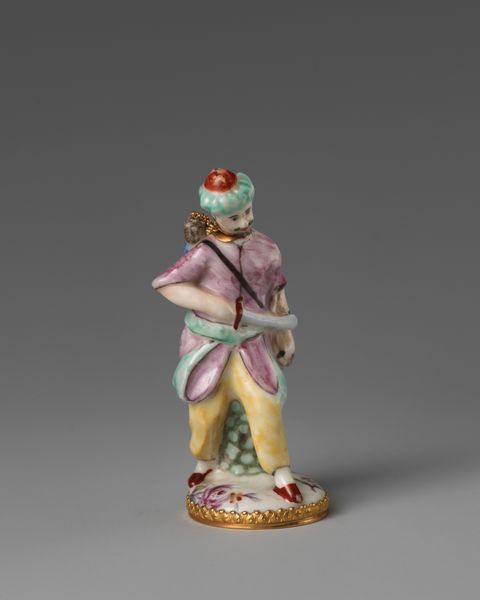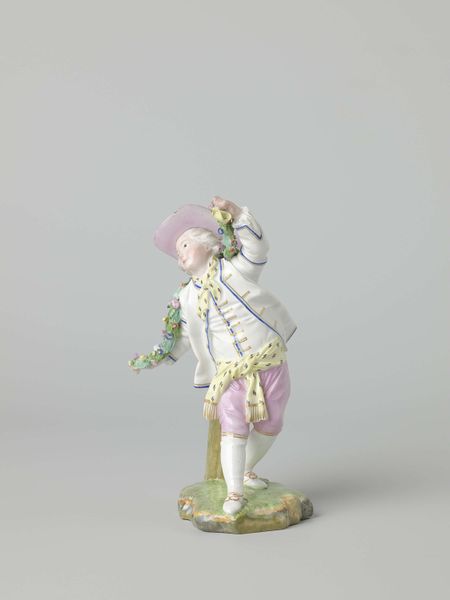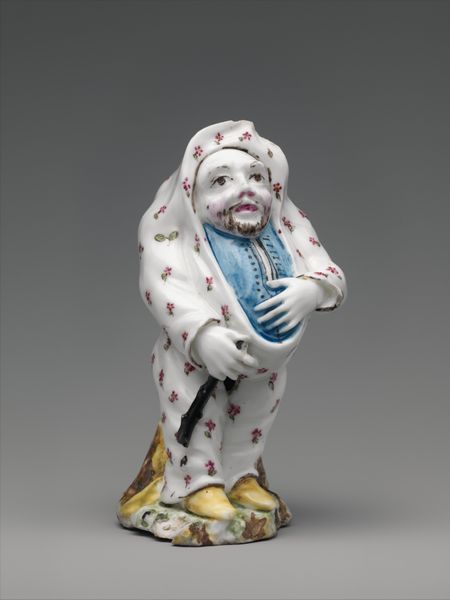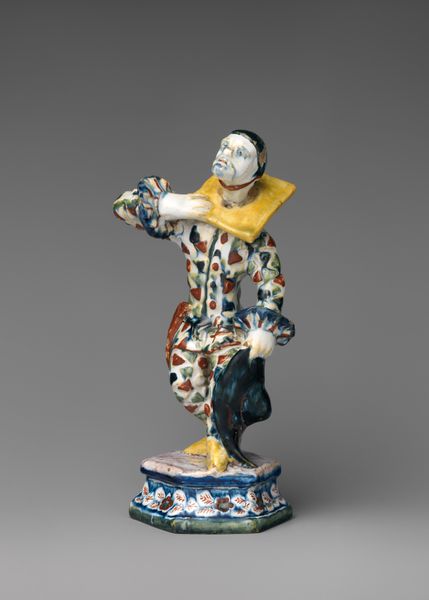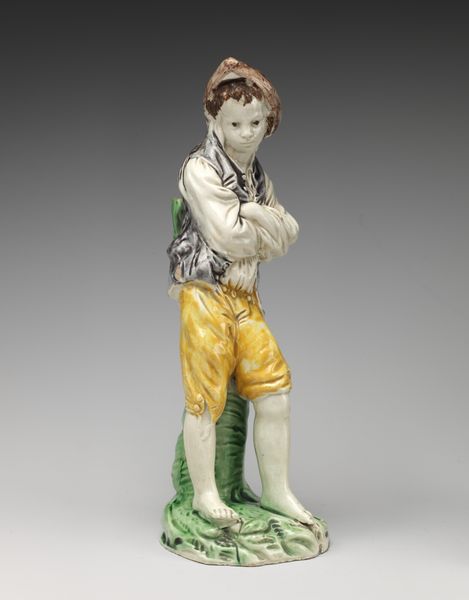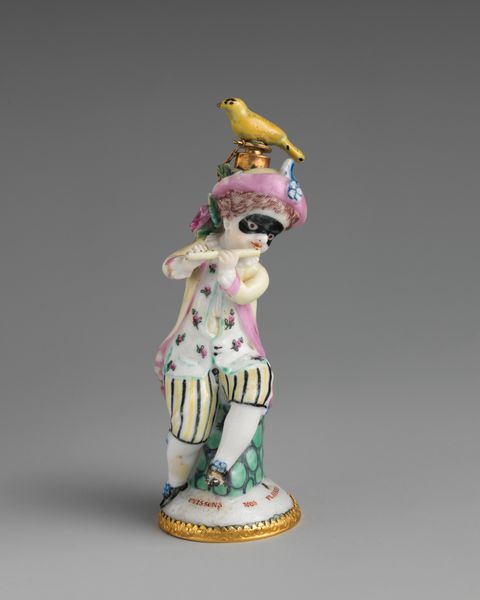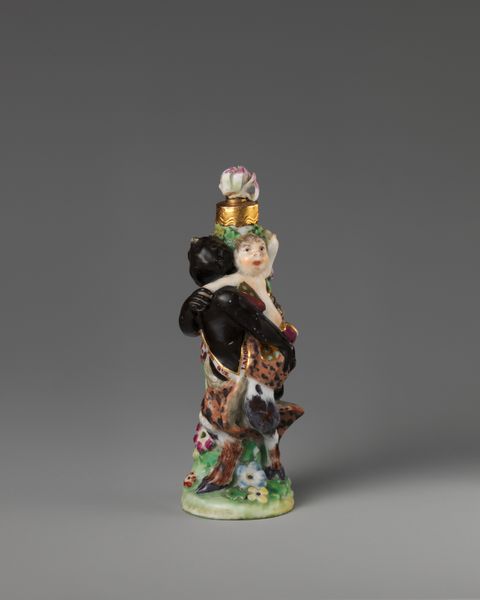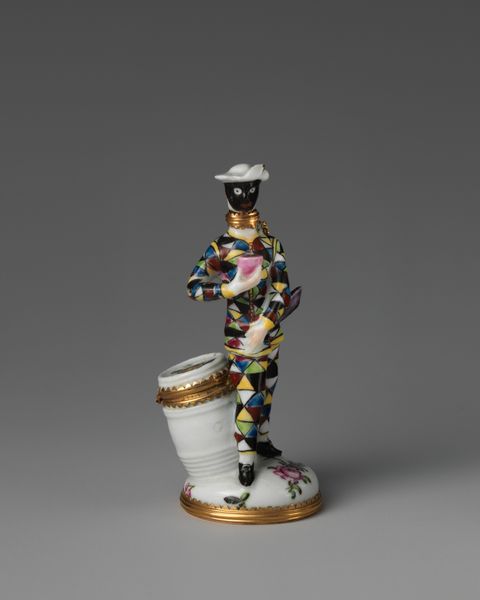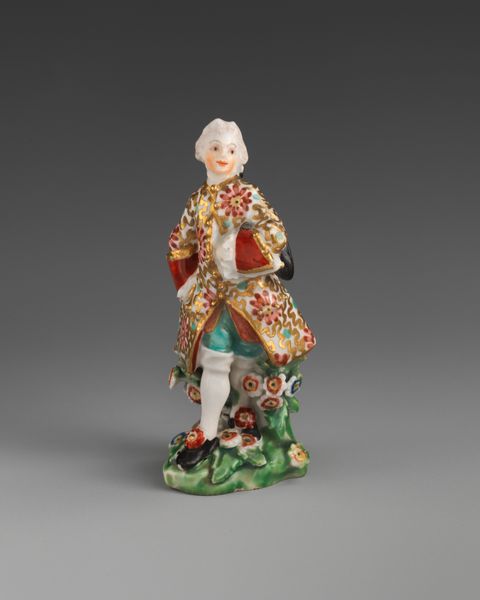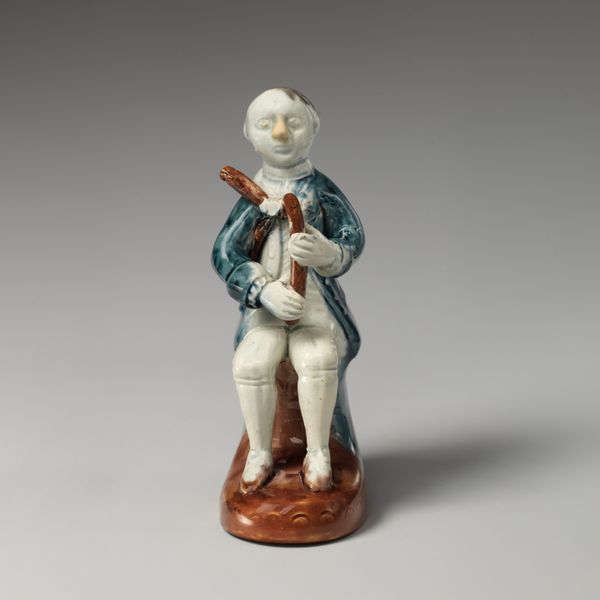
ceramic, porcelain, sculpture
#
ceramic
#
porcelain
#
figuration
#
sculpture
#
decorative-art
#
rococo
Dimensions: Height: 8 3/8 in. (21.3 cm)
Copyright: Public Domain
Curator: The title of this small ceramic sculpture is "Lawyer from the Italian Comedy," produced by Mennecy, sometime between 1750 and 1765. It's porcelain, showcasing the delicate artistry popular during the Rococo period. Editor: He’s quite the figure, isn't he? The pose—almost a backwards lean—immediately reads as affected, maybe even mocking. There’s something playfully subversive in the tilt of his head, too. Curator: Exactly. Commedia dell'Arte characters were stock figures, often caricatures of societal roles. Here, the lawyer embodies corruption or absurdity, reflecting the common people’s view of the legal system. Editor: And the material itself–porcelain– speaks volumes. It suggests refinement, fragility. Making a critique of power in such delicate materials is itself a comment, layering satire and social commentary. Was Mennecy being critical? Curator: It’s likely a commentary on class structures, certainly. The production of porcelain itself was an industry closely linked to aristocratic patronage. To render such a satirical figure in such a valued medium highlights that class tension, using their own precious material against them in a subtle commentary. Editor: What about his costume? The pink and gold jacket feels extravagant. And then the painted black "beauty marks"...they speak to a theatricality designed to conceal some unspoken truth, or some deeper ugliness. Curator: Absolutely. Every detail served to identify these stock characters immediately to an audience. Color, posture, props - they all contribute to that sense of instant legibility for the 18th-century theatergoers. But do you think, looking at it today, something is lost of that instant accessibility? Editor: I agree that the reading has become multifaceted today; but by studying Mennecy’s sculpture, and learning about the art and social contexts in which it was created, new audiences are made aware that art plays a significant public role—which it maintains even today. Curator: It allows us to examine the socio-political forces that may influence how art is shaped, or interpreted. Well said. Editor: Precisely, It is a lovely and clever way to observe. Thank you.
Comments
No comments
Be the first to comment and join the conversation on the ultimate creative platform.
